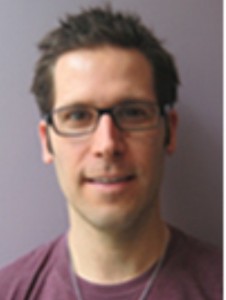My mother died of leukemia when I was sixteen years old. In the months leading up to her death, I didn’t visit her in the hospital. I went once but after sitting in my car in the parking lot for thirty minutes, I left without going in. I just couldn’t. I was not capable of dealing with what was happening.
Eventually, I’d be hurried to her bedside regardless: for fear she was not going to make it through the night. I remember the nurse coming into the waiting room quickly and saying, “She’s awake!” Next, I see my mother in a hospital bed with tubes coming out of her nose. My sister breaks down sobbing and rushes to her side. My mother is semi-hysterical, crying and exclaiming, “I am not ready to go!”
At the time, I had never exhibited much poise or depth. I tended to be somewhat hyperactive and scattered. I spent a lot of time daydreaming. Yet, in this most crucial moment, something I cannot explain happened.
In a strange flash of clarity that I have been inquiring to understand ever since, I grabbed my mother by the gown, jarring her present and bringing her eyes to mine, and said, “Mom, I love you very much and I’m going to do great things in my life and make you proud of me. I’m not going to come see you in the hospital again.” She nodded in acknowledgement and gave me a pained smile. I kissed her on the cheek and walked out of the room. That was the last time I saw my mother.
In the years that followed, disillusionment set in gradually. I moved from Los Angeles to New York, went to NYU and graduated with a degree in the fine arts. After I finished school, things got much worse. At some point, I got very low, so low that I felt I either needed to kill myself or find another way to live. Fortunately, I chose the latter.
Even after making this choice, I had no idea what to do. One of the only things I could think of was going to a yoga class. I’d been exposed to yoga in college and, even in those most cynical of days, could not deny how it seemed to make me feel better. I liked that it was ancient and sacred, and about things that are important.
First, I gravitated towards an Ashtanga, power vinyasa style. The intensity suited my struggling temperament. I gained discipline and some immediate gratification but was still largely hurting myself, only now with good intention.
Then, I explored an Iyengar based approach. I became more aware and technically proficient but the emphasis on accomplishing alignment ended up playing into a lack of self-esteem in me. There was always another variation I couldn’t do, my shoulder was never quite rotated properly and, even though I was somewhat impressive on the mat, I was still in a lot of pain.
Ultimately, I found my way to an entirely therapeutic orientation, inspired by the TKV Desikachar/Krishnamacharya tradition. By simplifying, slowing and centering my practice on breath, I was able to cultivate a more measured and patient mode of engagement and a different context for my practice where I was no longer trying to transcend my difficulties but rather learning how to ease them and just enjoy the fact that I am here.
I didn’t know it when I started but the course of my yoga practice has been the process of reconciling my mothers death. It’s difficult to explain how doing breathing and moving exercises can, inadvertently, carry with them the weight of facing mortality. Something about bringing careful attention to my breath and body, the most tangible expression of the fact that I am currently alive and the very thing that will be taken away from me in death, provides an experience that lessens the burdens I carry and illuminates life’s inherent worth.
From this standpoint, overcoming the difficulties that life presents becomes a celebratory endeavor and I feel strangely grateful for my mothers passing. The pain and sorrow I feel because of my mothers death, still just as powerful today as when I was sixteen years old, is what led me to yoga and a deeper appreciation for life’s blessings. My life has a deeper sense of purpose as a result.
As a teacher, I get to witness others as they, often unknowingly, reconcile their situations and come to the same reverence for life’s majesty. Playing some role in facilitating people discovering yoga and health makes me feel that I am of some use and reaffirms everything I hold dear.
Whenever someone comes up to me after class or drops me an emotional email to tell me how much they are benefiting from their practice, I feel the warmth of my mothers touch and know that I have succeeded in fulfilling my promise.
J. Brown is a yoga teacher, writer, and founder of Abhyasa Yoga Center in Brooklyn, New York. A teacher for 15 years, he is known for his pragmatic approach to teaching personal, breath-centered therapeutic yoga adapted to individual needs, including chronic or acute conditions. His essays have been featured in Yoga Therapy in Practice, Yoga Therapy Today, and the International Journal of Yoga Therapy.
J. Brown has been teaching yoga in New York since 1997. He is studied in the Ashtanga-Vinyasa, Iyengar, Sivananda, and Desikachar/Krishnamacharya forms of Hatha Yoga practice. His teachers include Alison West (Yoga Union Certified), Richard Freeman, Swami P. Saraswati (Rishikesh-India), Katchie Ananda and Mark Whitwell (Heart of Yoga Certified). Member IAYT (International Association of Yoga Therapists.)
J’s blog and essay writing is also featured at yogijbrown.com.

